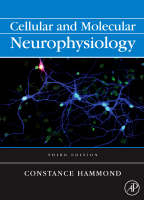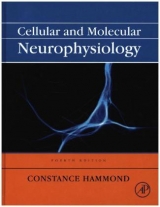
Cellular and Molecular Neurophysiology
Academic Press Inc (Verlag)
978-0-12-374127-1 (ISBN)
- Titel erscheint in neuer Auflage
- Artikel merken
Cellular and Molecular Neurophysiology, Third Edition, is the new, thoroughly revised edition of the only current, established, and authoritative text focusing on the cellular and molecular physiology of nerve cells. Previously titled Cellular and Molecular Neurobiology, the new title better reflects this focus. This version contains 80% new or updated material.
Fifteen appendices describing neurobiological techniques are interspersed in the text. Now in full color throughout, the book has over 400 carefully selected and constructed illustrations. It includes an instructor website with all the images in electronic format, plus additional material. The book is hypothesis driven rather than just presenting the facts, and the content is firmly based on numerous experiments performed by the top experts in the field.
While covering the important facts, the book also presents the background for how researchers arrived at this knowledge to provide a context for the field. It promotes a real understanding of the function of nerve cells that is useful for practicing neurophysiologists and students in a graduate-level course on the topic alike.
Constance Hammond is an INSERM director of research at the Mediterranean Institute of Neurobiology. A renowned Parkinson's disease investigator, in 2012 she became a Chevalier of the Légion d'Honneur in recognition for her services to scientific communication. Studying biology at the University of Pierre and Marie Curie and the Ecole Normale Supérieure in Paris she completed her thesis in neurosciences at the Marey Institute in Paris, directed by Prof. D. Albe-Fessard. Guided by her curiosity and her constant desire to learn, she changed lab and research domains several times. With the knowledge of other systems and the mastering of other techniques she finally came back to her first and preferred subject of research; the role of the subthalamic nucleus in the basal ganglia system in health and Parkinson's disease.
Part I – Neurons: Excitable and Secretory Cells that Establish Synapses.Chapter 1: NeuronsChapter 2: Neuron –Glial Cell CooperationChapter 3: Ionic Gradients, Membrane Potential and Ionic CurrentsAppendix 3.1: The active transport of ions by pumps and transporters maintain the unequal distribution of ionsAppendix 3.2: The passive diffusion of ions through an open channelAppendix 3.3: The Nernst equationChapter 4: The Voltage-Gated Channels of Na+ Action PotentialsAppendix 4.1: Current clamp recordingAppendix 4.2: Voltage clamp recordingChapter 5: The Voltage-Gated Channels of Ca+2Action Potentials: GeneralizationAppendix 5.1: Fluorescence measures of intracellular Ca2+ concentrationAppendix 5.2: Tail currentsChapter 6: The Chemical SynapsesAppendix 6.1: Neurotransmitters, agonists and antagonistsAppendix 6.2: Identification and Localization of Neurotransmitters and their ReceptorsChapter 7: Neurotransmitter ReleaseAppendix 7.1: Quantal nature of neurotransmitter releaseAppendix 7.2: The probabilistic nature of neurotransmitter release (the neuromuscular junction as a model)Part 2 – Ionotropic and Metabotropic Receptors in Synaptic Transmission and Sensory Transduction.Chapter 8: The Ionotropic Nicotinic Acetycholine ReceptorsAppendix 8.1: The neuronal nicotinic receptorsChapter 9: The Ionotropic GABAA ReceptorAppendix 9.1: Mean time and mean burst duration of the GABAA single-channel currentAppendix 9.2: Non-invasive measurements of membrane potential and of the reversal potential of the GABAA current using cell-attached recordings of single channelsChapter 10: The Ionotropic Glutamate ReceptorsChapter 11: The Metabotropic GABAB ReceptorsChapter 12: The Metabotropic Glutamate ReceptorsPart 3 – Somato-Dendritic Processing and Plasticity of Postsynaptic Potentials.Chapter 13: Somato-Dendritic Processing of Postsynaptic PotentialsI: Passive Properties of DendritesChapter 14: Subliminal Voltage-Gated Currents of the Somato-Dendritic MembraneChapter 15: Somato-Dendritic Processing of Postsynaptic PotentialsII: Role of Subliminal Depolarizing Voltage-Gated CurrentsChapter 16: Somato-Dendritic Processing of Postsynaptic PotentialsIII: Role of High Voltage-Activated Depolarizing CurrentsChapter 17: Firing Patterns of NeuronsChapter 18: Synaptic PlasticityAppendix 18.1: Depolarization of induced suppression of inhibition (DSI)Part 4 – The Adult Hippocampal Network.Chapter 19: The Adult Hippocampal networkChapter 20: Maturation of the Hippocampal Network
| Erscheint lt. Verlag | 11.2.2008 |
|---|---|
| Verlagsort | San Diego |
| Sprache | englisch |
| Maße | 216 x 279 mm |
| Gewicht | 1490 g |
| Themenwelt | Medizin / Pharmazie |
| Naturwissenschaften ► Biologie ► Zellbiologie | |
| ISBN-10 | 0-12-374127-0 / 0123741270 |
| ISBN-13 | 978-0-12-374127-1 / 9780123741271 |
| Zustand | Neuware |
| Haben Sie eine Frage zum Produkt? |
aus dem Bereich



